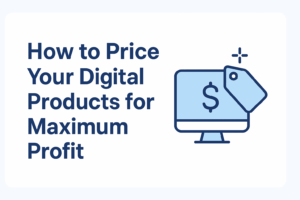A business plan is a roadmap that guides your business journey. It explains your idea, your goals, and how you’ll achieve them.
Many beginners think writing a plan is complicated and overwhelming. The truth is, it doesn’t need to be difficult or confusing.
A good business plan is simply about organizing your thoughts clearly. It helps you see the bigger picture and prepare for challenges.

Download Your Free e-Book
5 Simple Ways to Create Website & Landing Pages
Affiliate Disclaimer: I earn commission (get paid) if you click on the links and purchase a product below. My earnings do not impact the price you pay.
Investors and partners also use business plans to understand your vision. But even if you never seek funding, it’s still essential.
A plan keeps you focused and prevents wasting time or resources. It also shows you if your idea is realistic before investing heavily.
With the right approach, anyone can create a simple and effective plan. Let’s break the process into steps anyone can follow. By the end, you’ll feel confident writing a plan that works.

Why Do You Need a Business Plan?
A business plan isn’t just paperwork; it’s a tool for success. It helps you see the bigger picture and stay on track.
Having a plan saves time, reduces stress, and improves your chances. Even small businesses and side hustles benefit from having a clear plan.
Provides Direction
A plan gives you direction and keeps your business focused. Without it, you risk jumping between ideas without real progress.
Tracks Goals
It helps you set measurable goals and track your progress. This makes it easier to stay accountable and motivated over time.
Avoids Costly Mistakes
Planning ahead reduces costly mistakes and wasted resources. You’ll spot challenges earlier and prepare solutions before problems grow bigger.
Works for Any Size Business
Many think only big companies need detailed business plans. In reality, even freelancers and side hustles benefit from structured planning.

Step 1: Write Your Business Overview
Your business overview is a short summary of what you do. It introduces your idea and explains the basics clearly and simply. Provide readers a quick understanding of your business vision.
Include the business name and the core products or services. Explain exactly who your target audience is and what they need.
Highlight why your business is different from others in the same space. Keep it short but detailed enough to spark interest and clarity.
A clear overview sets the stage for the rest of your plan. It shows confidence in your idea and purpose from the beginning.
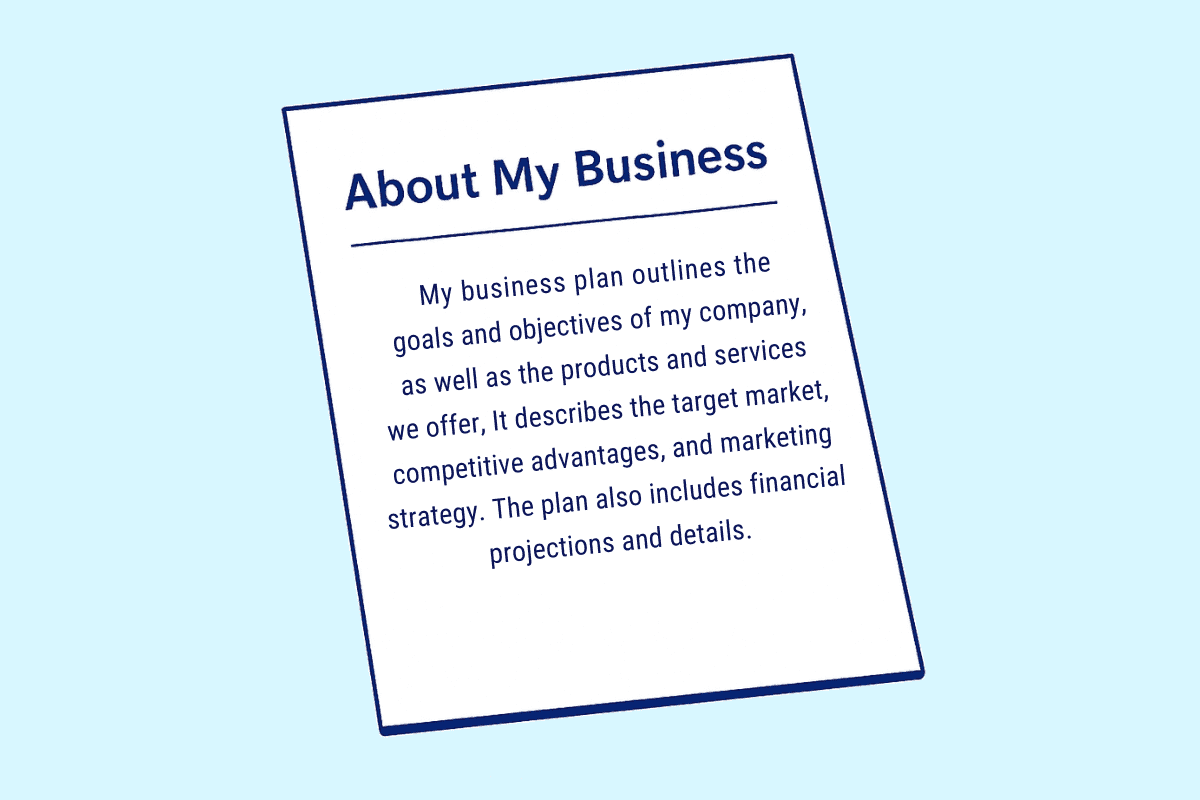
Step 2: Describe Your Products or Services
Here, you’ll explain exactly what your business will sell or provide. Focus on describing your offer in simple and clear language.
- If you sell products, mention their main features and benefits.
- If you provide services, explain how they solve customer problems.
- Highlight what makes your offer unique compared to other businesses.
Don’t just list features; explain the real value for your customers. People buy solutions, not just products, so focus on outcomes and benefits.
Clearly describe your products or services, and readers will understand your value. This step proves you know your business inside and out.
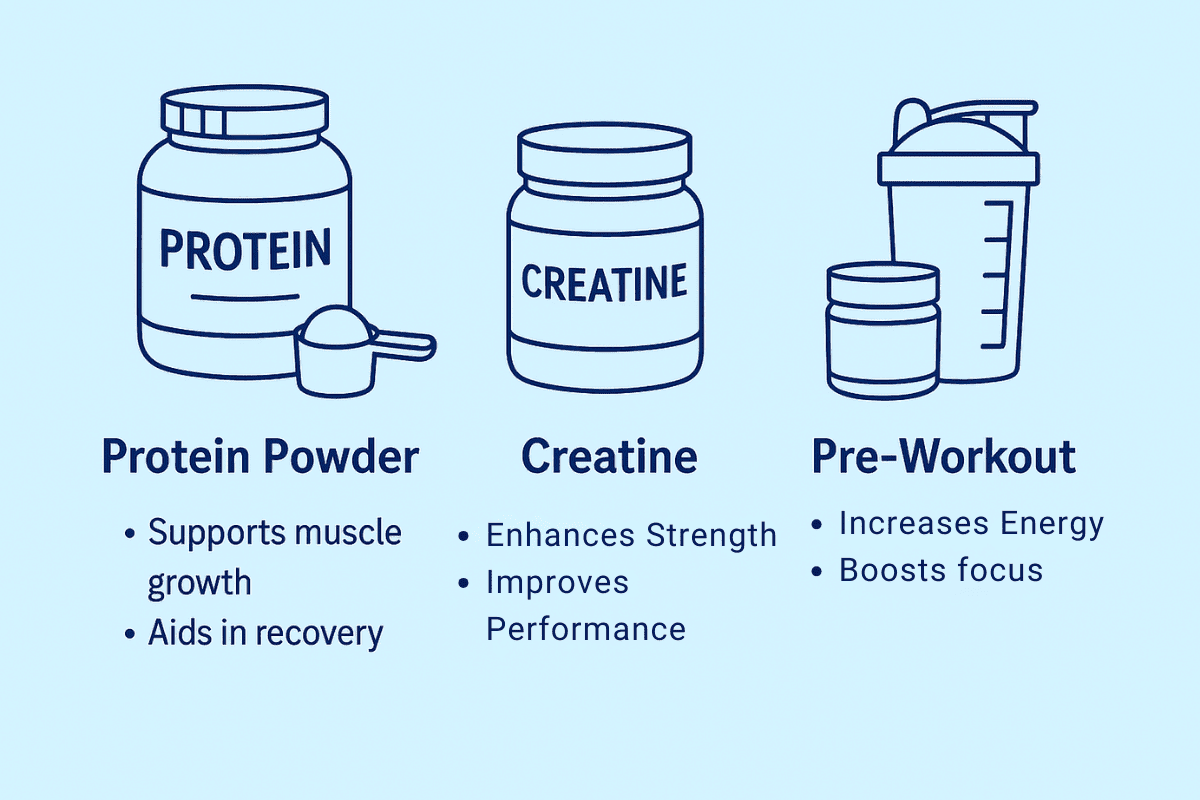
Step 3: Know Your Target Market
One of the most important steps is to know your target market. Without it, your marketing and sales efforts won’t reach the right people. Know who your customers are and what they need.
| Factor | What to Consider |
| Age | Are they teenagers, young professionals, or older adults? |
| Location | Do they live locally, nationally, or across different countries? |
| Lifestyle | What do they value: convenience, luxury, health, or affordability? |
| Interests | What hobbies, passions, or activities influence their buying decisions? |
| Problems | What challenges do they face that your business can solve? |
Break it down to see exactly who you’re serving. A clear picture of your target market makes marketing much more effective.
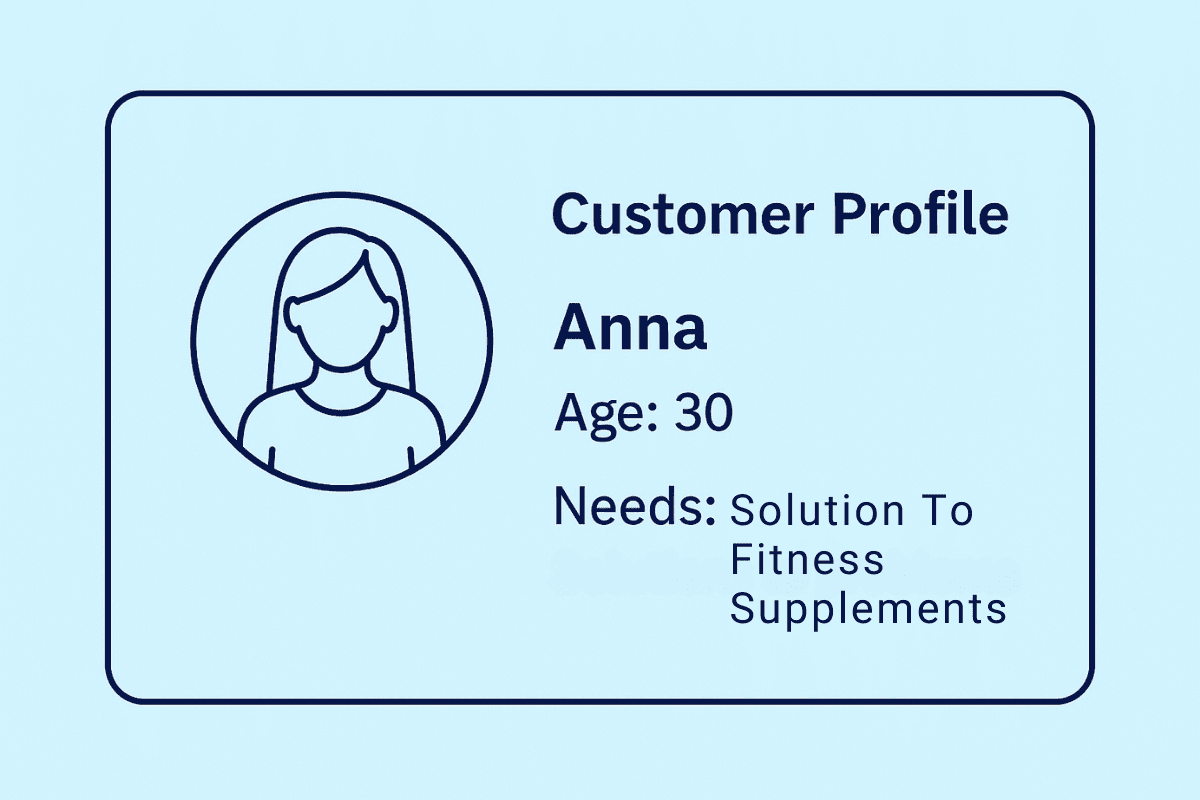
Step 4: Study the Competition
Your competitors can teach you valuable lessons about what works. Studying them helps you avoid mistakes and discover new opportunities.
- Visit their websites to see how they present their business.
- Check their social media to study engagement and customer reactions.
- Read reviews to learn what customers like or dislike most.
Look carefully at negative reviews because they often reveal missed opportunities. These gaps are where your business can stand out with improvements.
Competition isn’t something to fear; it’s proof there’s already demand in the market. Learn from them to make your strategy sharper and far more effective.

Step 5: Plan Your Marketing Strategy
Done with business ideas? It’s time for marketing. You need a plan to show people your product and attract customers. Without one, even the best idea can remain unnoticed and unsuccessful.
Social Media Marketing
Social media platforms help you connect directly with your audience. Pick one or two platforms instead of trying to master them all.

SEO and Content
SEO brings traffic from search engines by optimizing blogs or websites. Creating valuable content also builds trust and long-term authority in your niche.
Email and Ads
Email marketing allows consistent communication with potential and existing customers. Ads on platforms like Facebook or Google give quick visibility and reach.
Word of Mouth
Happy customers share your business with friends, family, and colleagues. Encourage referrals by offering great service and rewarding loyal supporters.
Start simple by choosing one or two channels that fit your audience. As your business grows, you can expand into more strategies confidently.

Step 6: Outline Your Operations Plan
An operations plan explains how your business will run every day. It shows the systems, resources, and people needed to deliver results.
Clear planning ensures efficiency and prevents confusion as your business grows. A clear operations plan proves you’ve considered every logistical detail carefully.
Key Activities
List the daily tasks required to keep the business running smoothly. This may include production, customer service, delivery, or digital management tasks.
Tools and Resources
Mention any tools, equipment, or software that support your operations. This could be project management software, accounting tools, or delivery systems.
Suppliers and Partners
If you need suppliers, outline who they are and their role. Partnerships also matter, especially if you outsource certain tasks or services.
Location of Operations
Decide where you’ll operate; whether from a home office or storefront. Online businesses may not need physical space, but planning is still necessary.
Staff and Support
Include details about staff, freelancers, or partners involved in operations. Knowing who handles what ensures accountability and smooth workflows daily.
Step 7: Create a Simple Financial Plan
A financial plan helps you see if your business idea is sustainable. Start by calculating the basic startup costs needed before launching officially.
Add expected income projections based on realistic sales or service estimates. Write down monthly expenses like rent, tools, or marketing costs.
Compare expected income with expenses to check potential profitability over time. Set clear profit goals that help you measure progress month by month.
Keep numbers simple but detailed enough to track money accurately. A clear financial plan protects you from surprises and unnecessary risks.

Common Mistakes Beginners Make
Writing a business plan is easier than most people believe. Still, beginners often make mistakes that weaken their plan and confidence. Avoid these pitfalls to save time and stay focused.
Writing Too Much Detail
Many beginners write overly detailed plans that become confusing. Keep your plan clear, simple, and easy to understand quickly.
Ignoring Competition
Some ignore competitors and assume their idea is completely unique. Studying competition helps you learn strengths, weaknesses, and valuable opportunities.
Overestimating Sales and Underestimating Costs
It’s easy to be overly optimistic about sales and income. Beginners also underestimate costs, which creates financial stress and missed targets.
Not Updating the Plan Regularly
A business plan isn’t one-time; it should grow with your business. Review it often to adjust goals, strategies, and financial projections accurately.
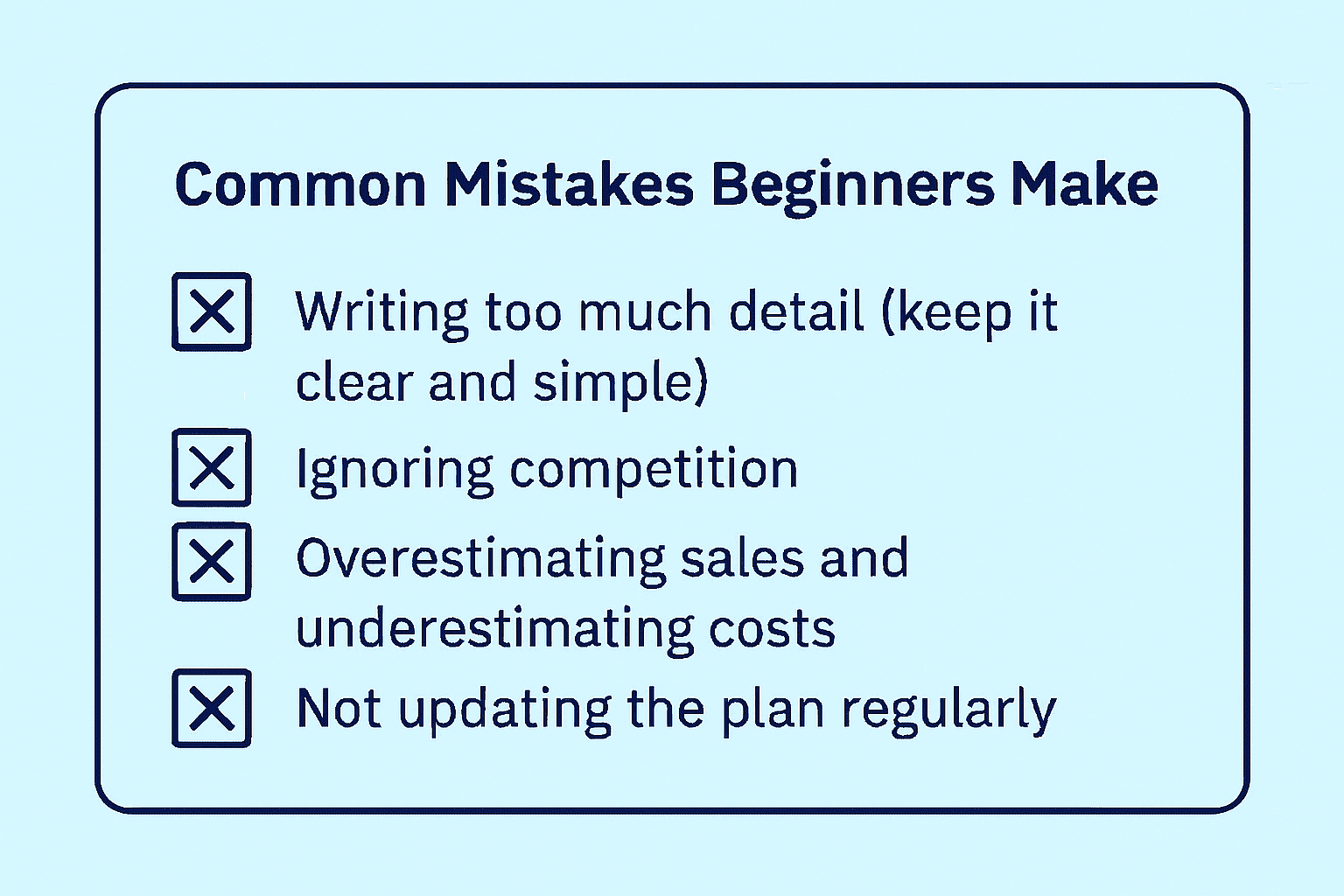
Conclusion
Start your business plan with a simple version. Keep it clear, focused, and practical instead of overwhelming yourself. Improve it over time as your business grows and changes.
Regular updates make your plan more useful and accurate at every step. Remember, progress matters more than waiting for the perfect plan.



